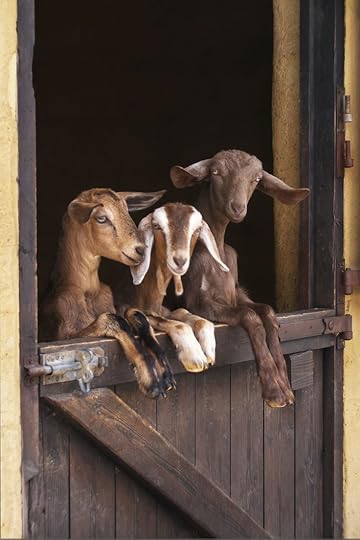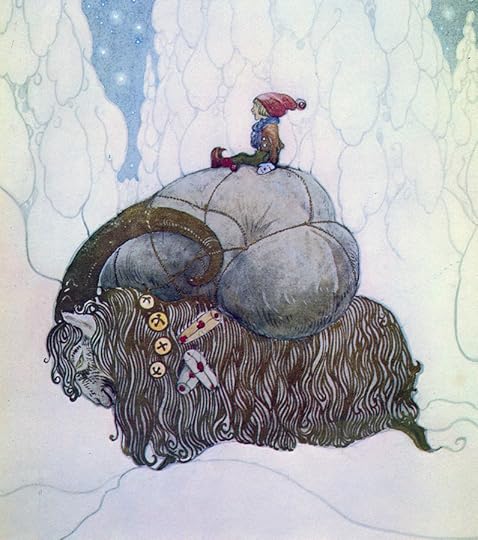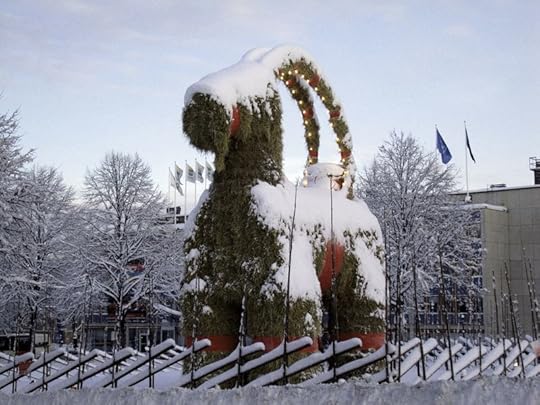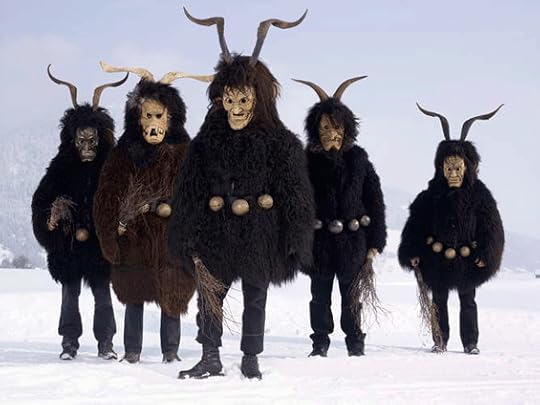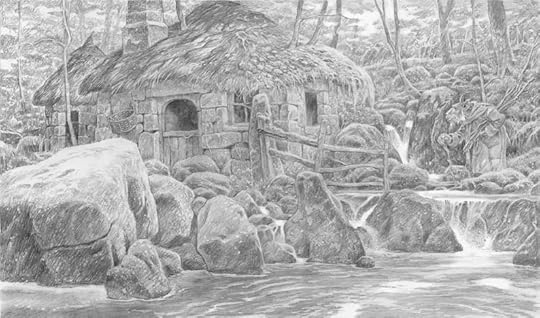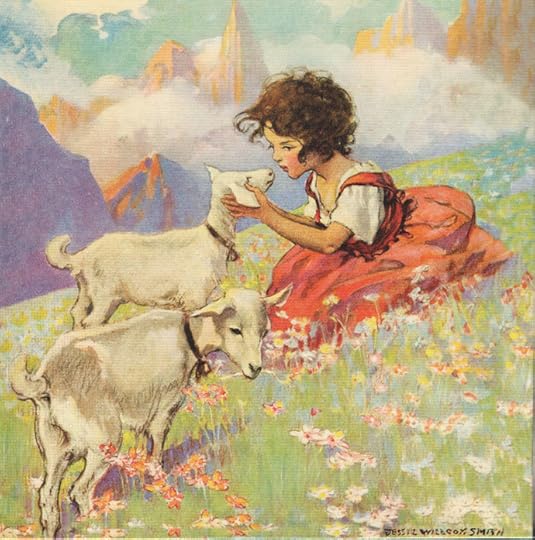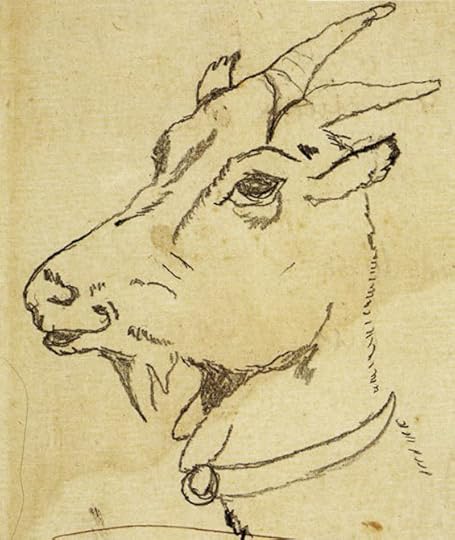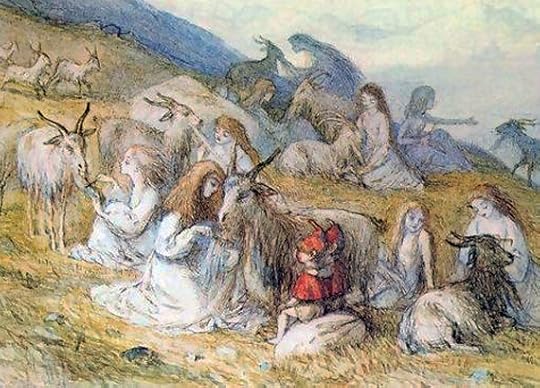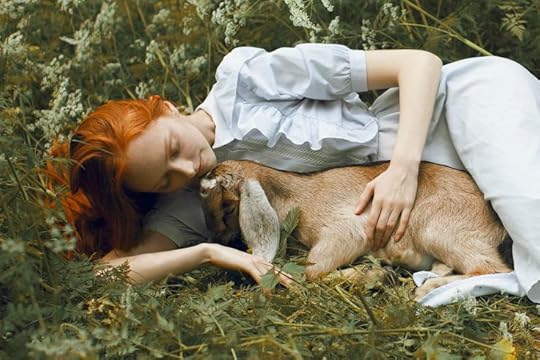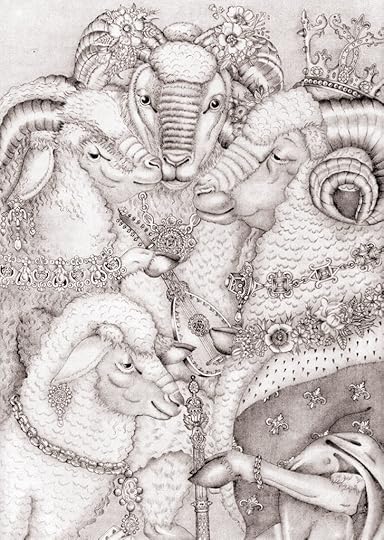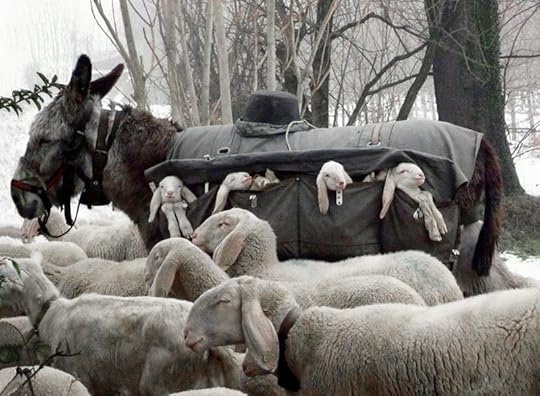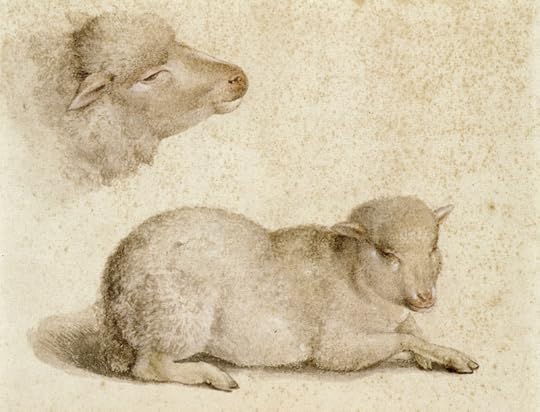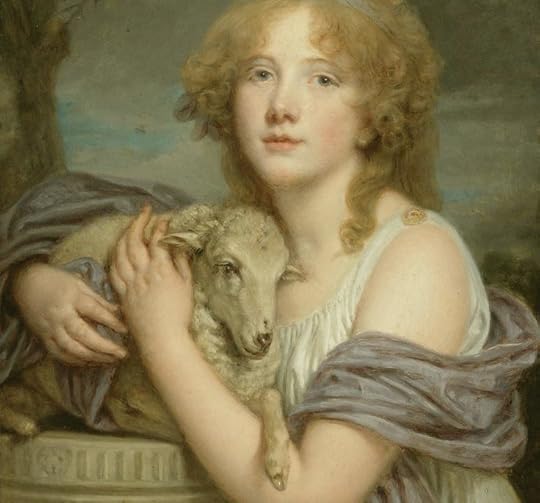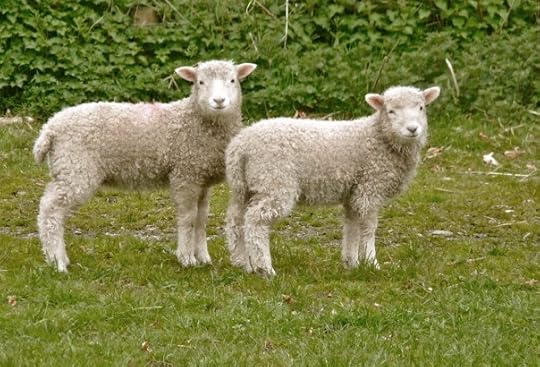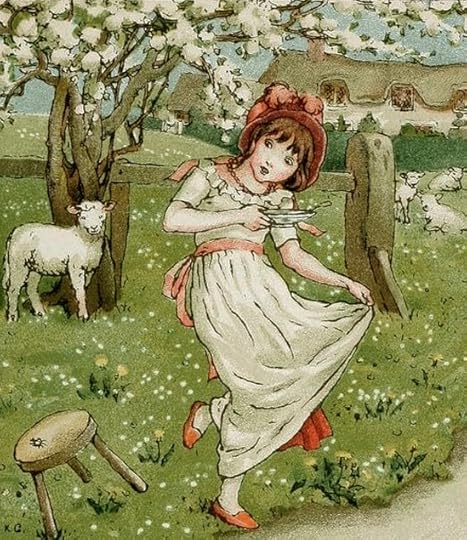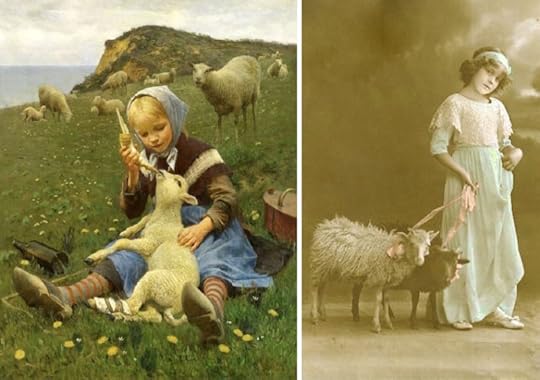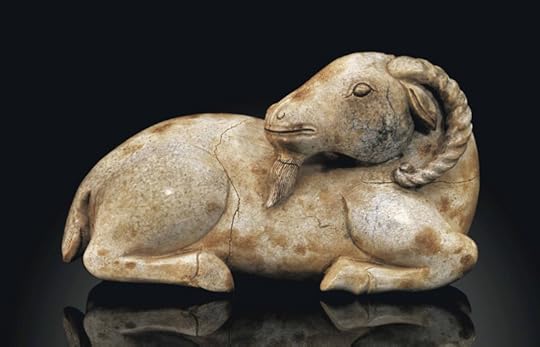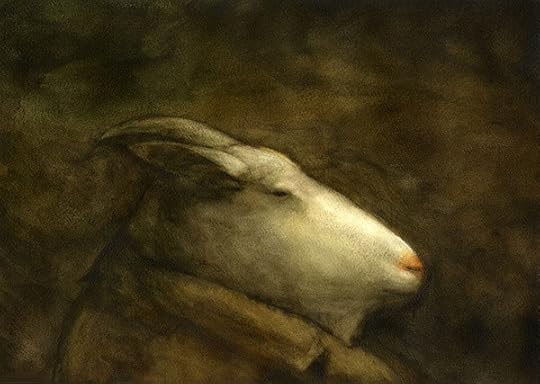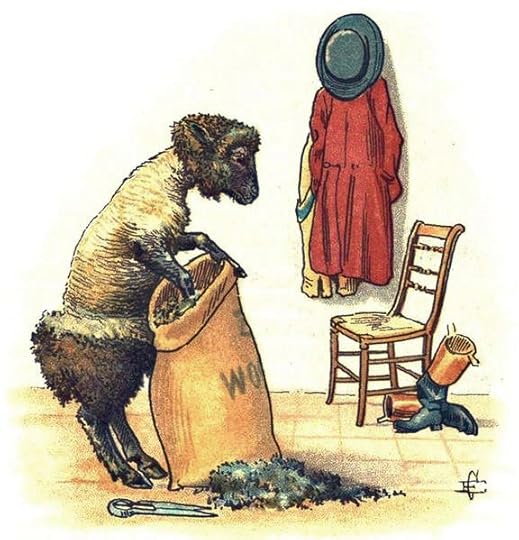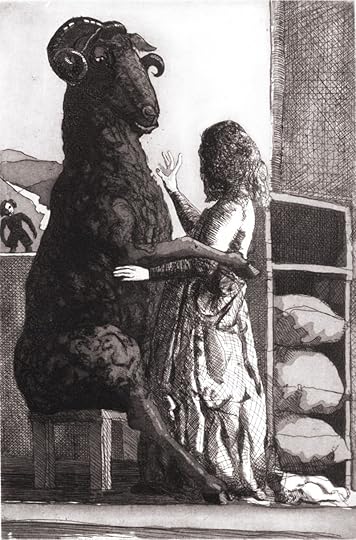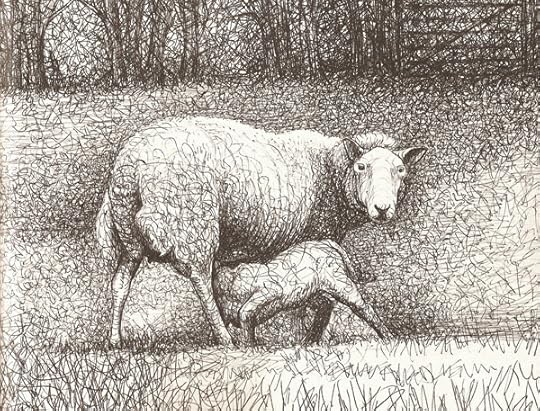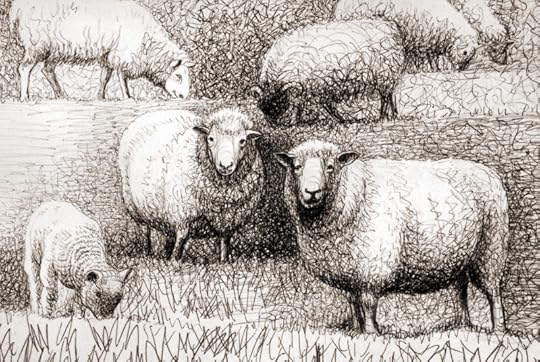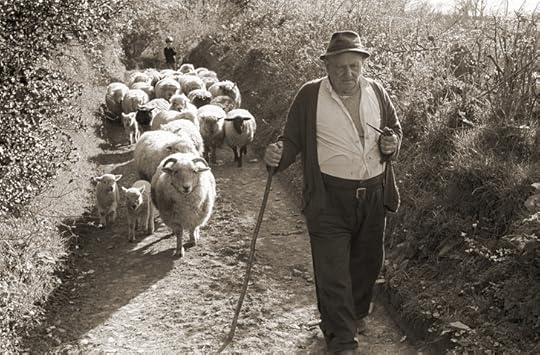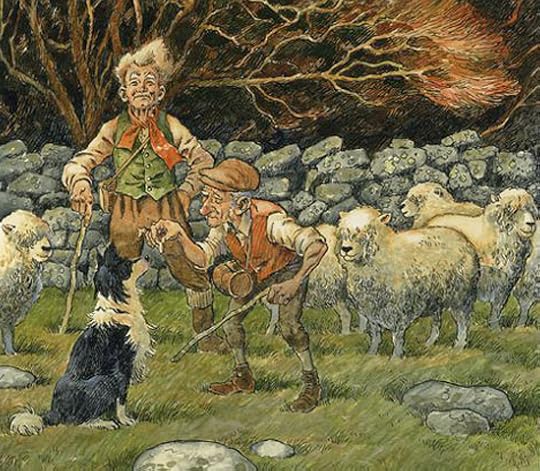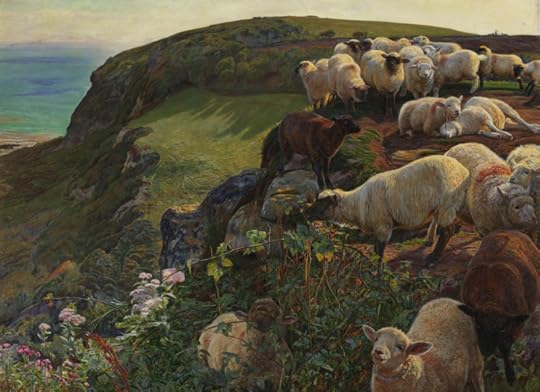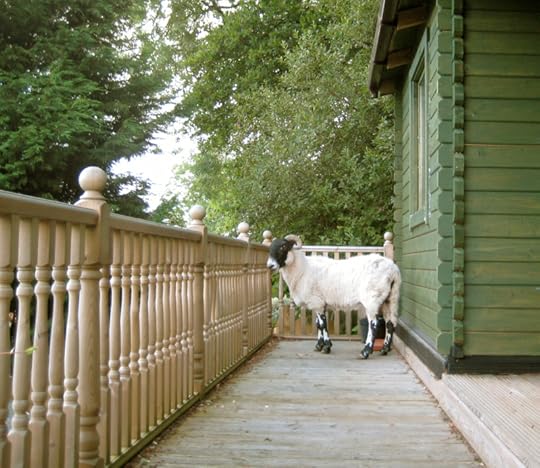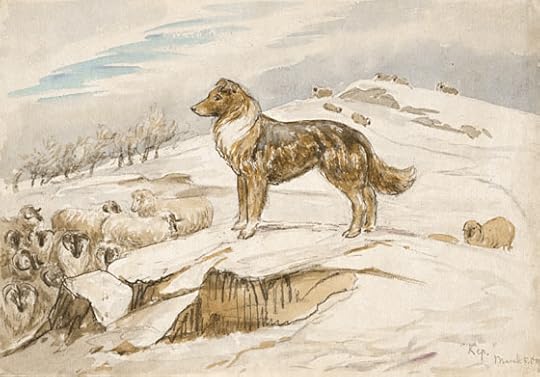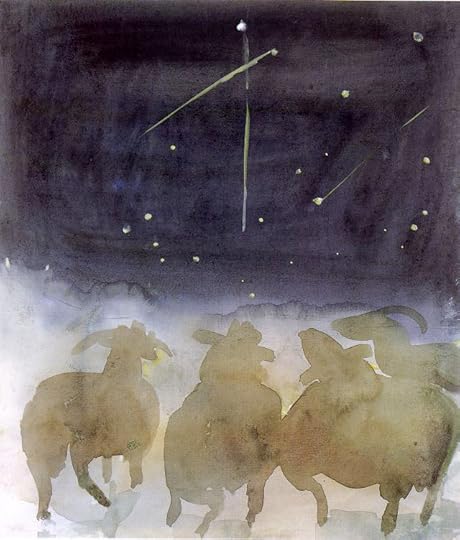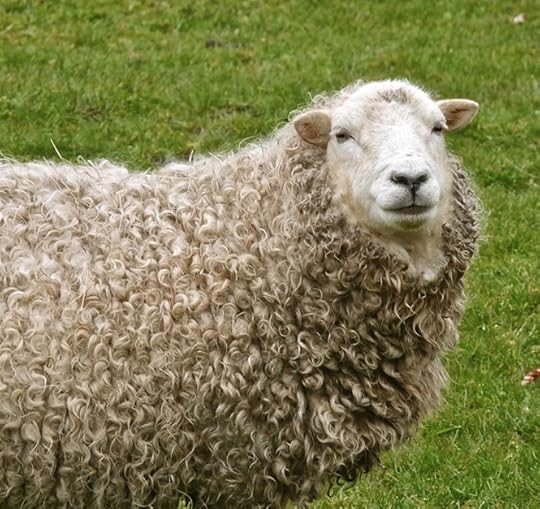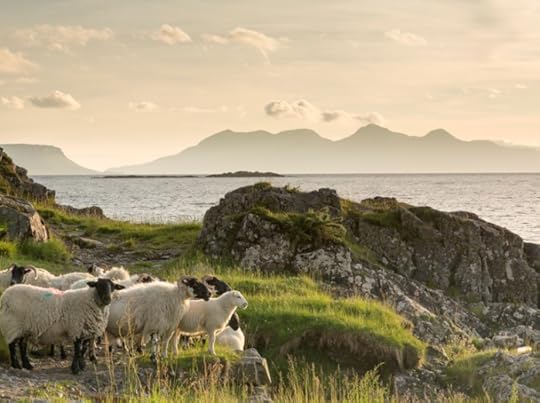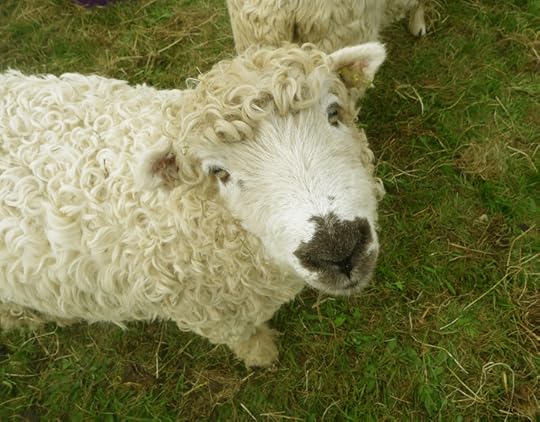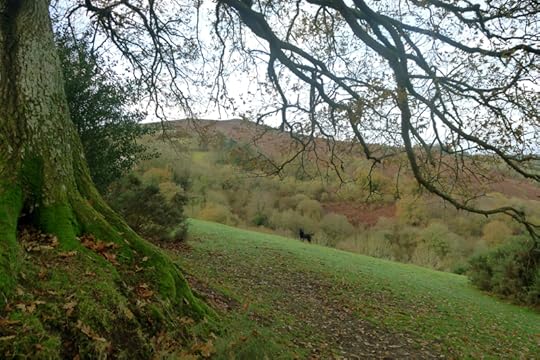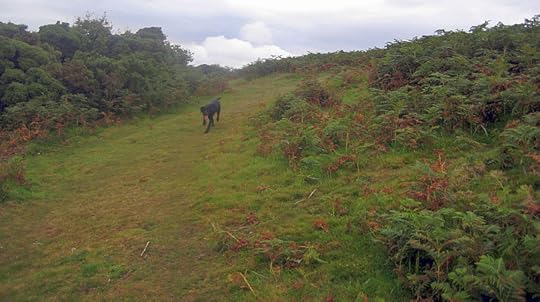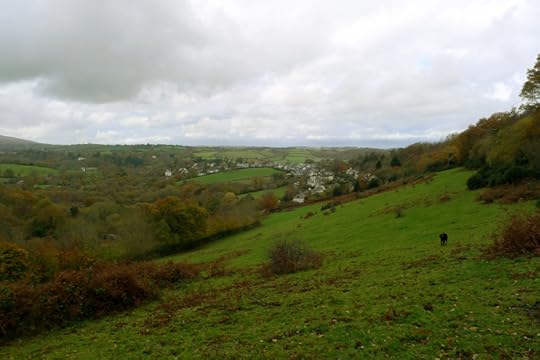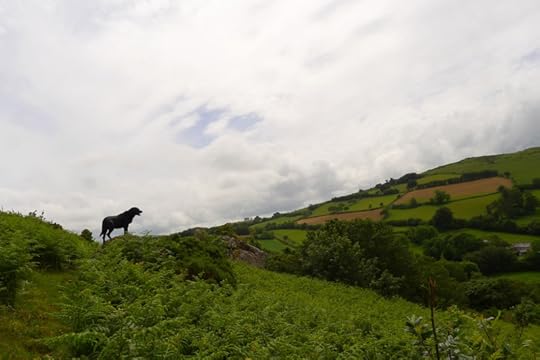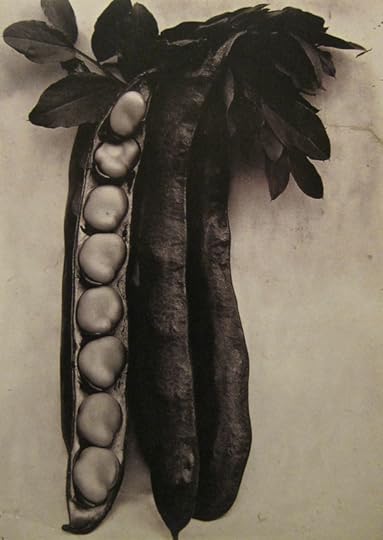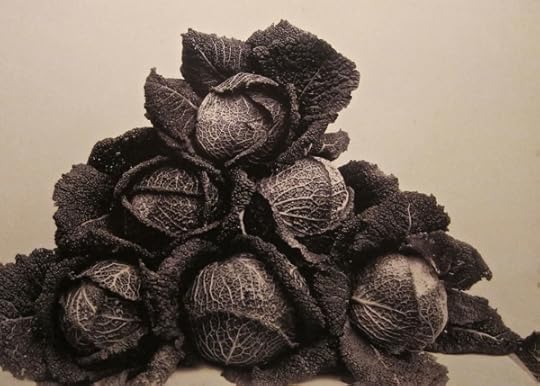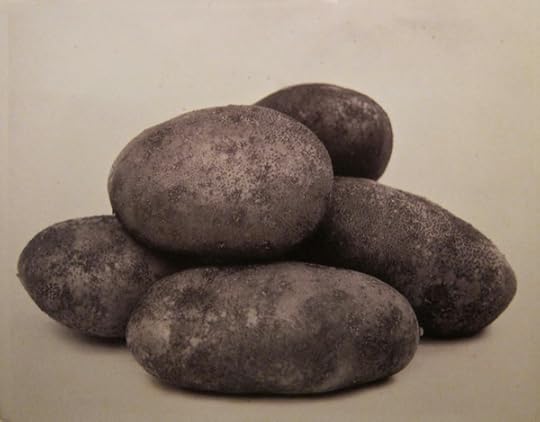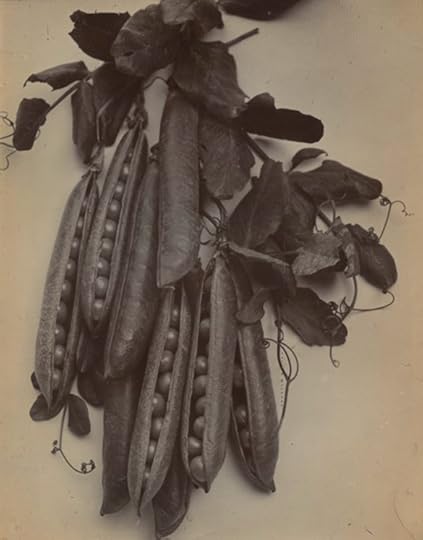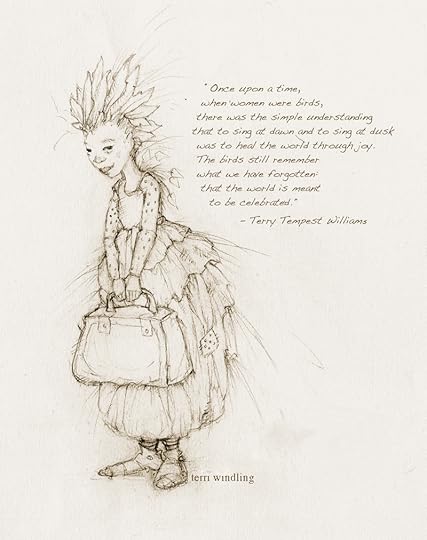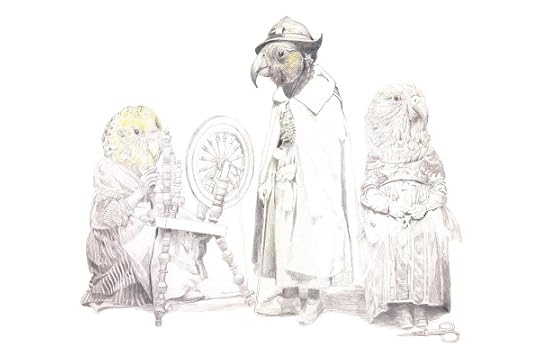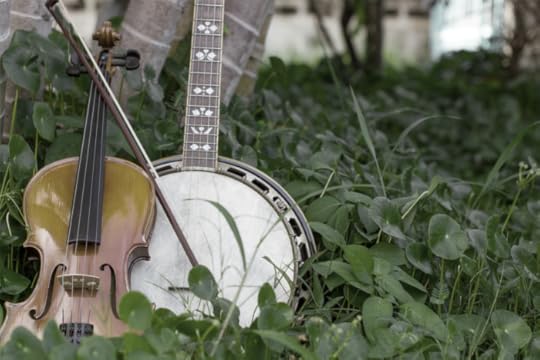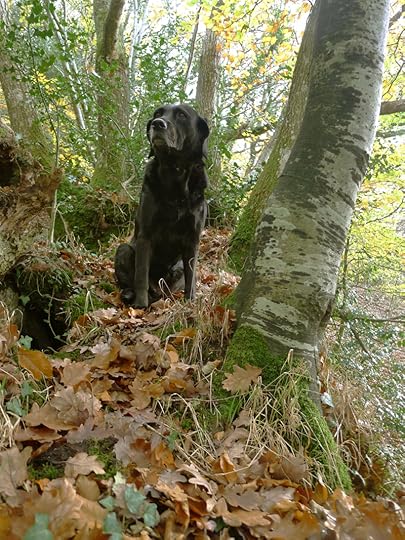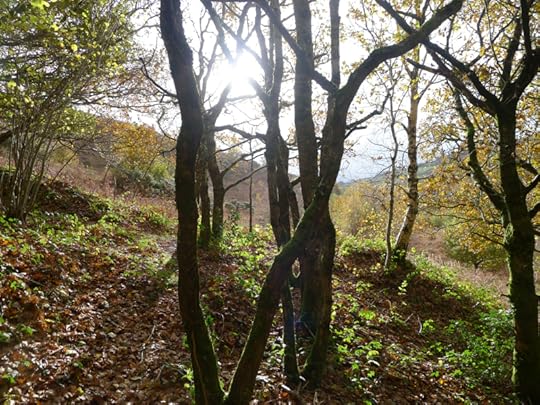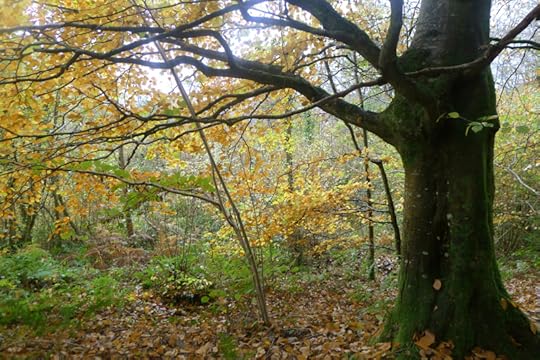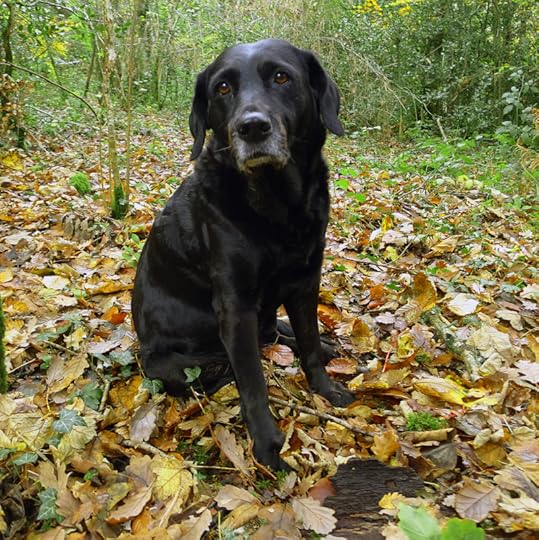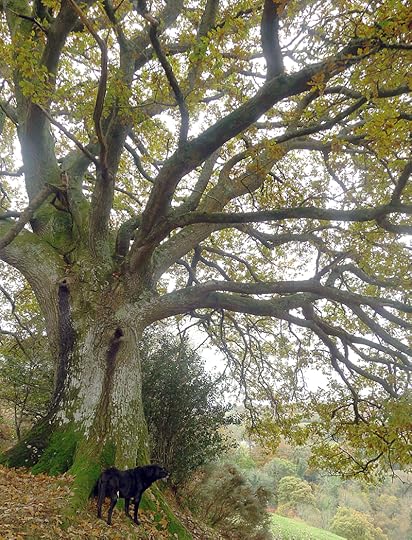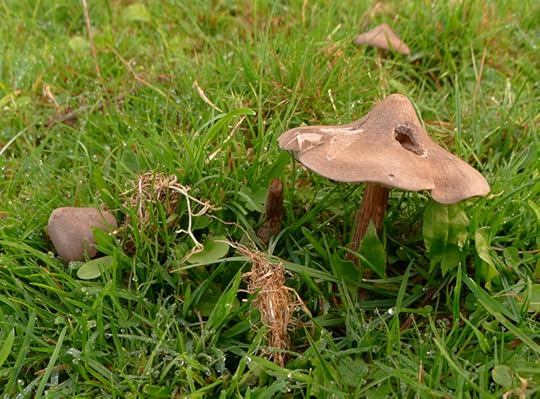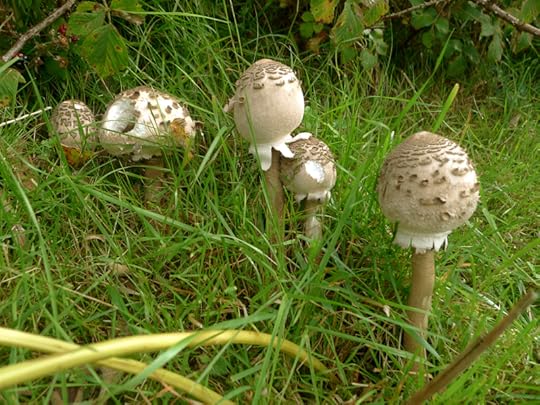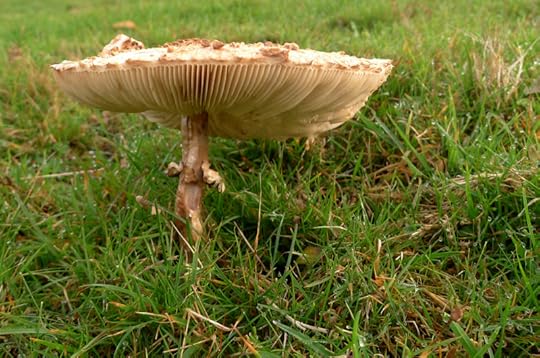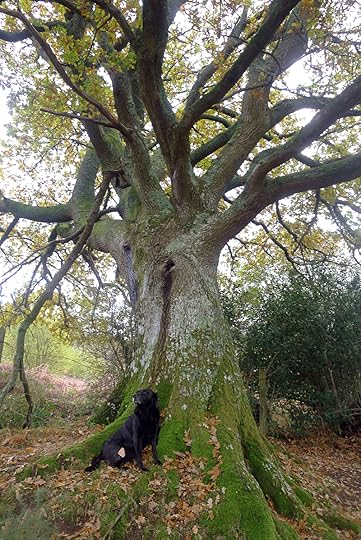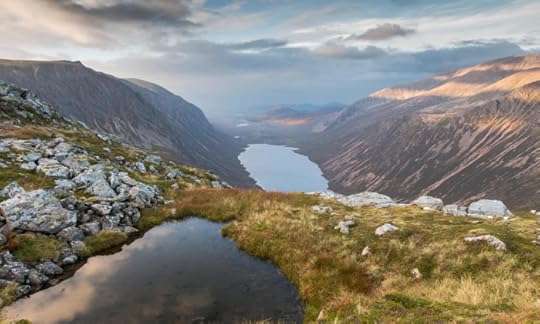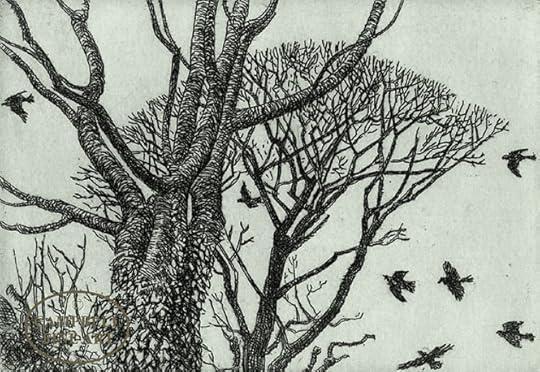Terri Windling's Blog, page 22
December 1, 2020
And now for the goats
In myths all around the world the goat is associated with wilderness. The Greco-Roman gods who inhabited the forest depths and remote mountaintops roamed the backlands with goat companions, and appeared in the 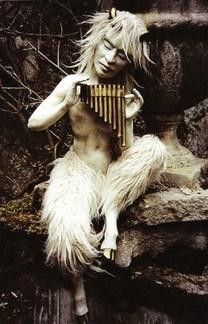 form of goat-men themselves: Pan, Silvanus, Faunus, Bacchus, Dionysis, goat lovers all. Female goats were sacred to Artemis/Diana, goddess of female independence and the hunt, and goat milk was a common offering with which to honor or propitiate her.
form of goat-men themselves: Pan, Silvanus, Faunus, Bacchus, Dionysis, goat lovers all. Female goats were sacred to Artemis/Diana, goddess of female independence and the hunt, and goat milk was a common offering with which to honor or propitiate her.
In Sumerian myth, goats belonged to Marduk, the ancient god of magic and patron deity of Babylon, and were regarded as potent, uncanny beings due to this association. Agni, the Vedic god of fire, rides a chariot pulled by goats in some Hindu tales; as does Thor, the god of thunder, strength, and virility in Scandinavian myth. Thor's goats, called Tanngrisnir and Tanngnj��str, are slaughtered and feasted on each night, but when their bones are carefully gathered together these magical goats return to life.
The Yule Goat, found across northern Europe, is a straw figure traditionally made from the very last sheaf of grain to be harvested each year. It can range in size from tiny to huge, and has magical properties. The custom is pagan in origin, but has been become attached to 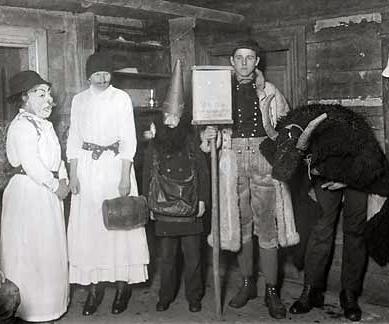 Christmas lore in a number of northern countries: Father Christmas is sometimes pictured as riding on the back of a goat in Scandinavia, for example, and "going Yule goat" refers to the custom of carolling or wassailing. In some regions, a man dressed as a goat accompanies the singers as they go from house to house; he is a Trickster figure, playing pranks on households not sufficiently hospitable. In other traditions, the Yule Goat is a gentle, invisible spirit who watches to make sure the winter rituals are correctly carried out, or a figure who, like Santa Claus today, distributes presents to children.
Christmas lore in a number of northern countries: Father Christmas is sometimes pictured as riding on the back of a goat in Scandinavia, for example, and "going Yule goat" refers to the custom of carolling or wassailing. In some regions, a man dressed as a goat accompanies the singers as they go from house to house; he is a Trickster figure, playing pranks on households not sufficiently hospitable. In other traditions, the Yule Goat is a gentle, invisible spirit who watches to make sure the winter rituals are correctly carried out, or a figure who, like Santa Claus today, distributes presents to children.
The Krampus is a relative of the Yule Goat, but he is far less benign. Known largely in Alpine regions, he's a hairy, frightening beast-man with the horns and hooves of a goat, wearing rattles and bells around his waist. He distributes gifts to good children and drags the naughty ones off into the forest.
The symbolism attached to goats varies a great deal around the world. In some places, they represent gentleness, endurance, spiritual purity, and sacrifice; in others, independence, lust, virility, fertility, 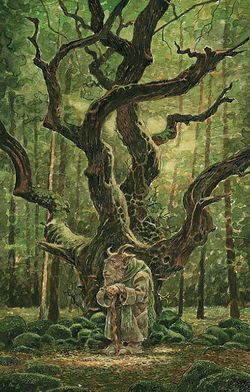 creative vigor, and stubbornness. Those born in the Chinese year of the goat are said to be shy, creative, and prone to perfectionism, while in Persian myth, goats symbolize leadership, forcefulness, and strength. This range reflects the nature of goat themselves. Though they were among the earliest of animals to be domesticated by humankind, they are also among the quickest to return to a feral state when opportunity arises.
creative vigor, and stubbornness. Those born in the Chinese year of the goat are said to be shy, creative, and prone to perfectionism, while in Persian myth, goats symbolize leadership, forcefulness, and strength. This range reflects the nature of goat themselves. Though they were among the earliest of animals to be domesticated by humankind, they are also among the quickest to return to a feral state when opportunity arises.
In old stories ranging from Aesop's Fables to fairy tales and nursery rhymes, goats are cannier than sheep (think, for example, of the clever Three Billy Goats Gruff), and though they're generally not full Trickster characters, they tend to retain an edge of Trickster's wiliness and wildness. Even in more recent stories for children -- such as Heidi, the classic by Johanna Spyri (which I adored as a child) -- they represent our connection to nature and life lived in tune with nature's cycles...carrying the echo of goat-legged Pan wherever they roam the mountains, and wherever we follow.
"From sunrise to sunset, I was in the forest, sometimes far from the house, with my goat who watched me as a mother does a child," wrote Mexican painter Diego Rivera (in My Art, My Life). "All the animals in the forest became my friends, even dangerous and poisonous ones. Thanks to my goat-mother and my Indian nurse, I have always enjoyed the trust of animals -- a precious gift. I still love animals infinitely more than human beings."
Pictures: goats photographed by Adrienne Elliot, a sculpture of Pan by Wendy Froud, a Swedish Yule Goat photographed in 1917, "Yule Goat" by John Bauer (1882-1918), a straw Yule Goat in Sweden (2009), a photograph of Krumpus figures by Charles Fregere (from his brilliant Wilder Mann series), "Old Goats Home" by David Wyatt (initial sketch for a painting), "The Gidleigh Goat" by David Wyatt (Gidleigh is a village close to Chagford), "Heidi and the Goats" by Jessie Willcox Smith (1863-1935), a goat sketch by Diego Rivera (1886-1957), "Girls Combing the Beards of Goats" by Richard Doyle (1834-1883), and a goat image from the Russian surrealist photographer Katerina Plotnikova.
November 30, 2020
The folklore of sheep
Sheep are associated with Christmas in folk tales told across northern Europe and the British Isles. On Christmas eve, these tales report, all sheep face east, bow three times, and are gifted with the power of speech from the stroke of midnight until the rise of the sun. This holy ritual cannot take place under the gaze of human beings, but provided the sheep are unobserved and unaware, their conversations can be 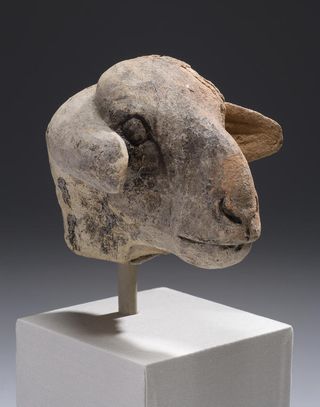 overheard. In some accounts, the sheep sing hymns; in others, they foretell events of the year to come; and in some they gossip, praising or bemoaning the conditions in which they live. A grumbling sheep, mind you, is a cause for worry, because sheep are especially beloved and protected by Mother Mary in the folklore tradition, and a black mark is lodged in the heavenly accounts against farmers or shepherds who treat them ill.
overheard. In some accounts, the sheep sing hymns; in others, they foretell events of the year to come; and in some they gossip, praising or bemoaning the conditions in which they live. A grumbling sheep, mind you, is a cause for worry, because sheep are especially beloved and protected by Mother Mary in the folklore tradition, and a black mark is lodged in the heavenly accounts against farmers or shepherds who treat them ill.
Going back to myths older than Christianity: Duttur was the Sumerian pastoral goddess associated with ewes, milk, and arts of the dairy; she was the mother of Tammuz: the shepherd god of rebirth, fertility, and new growth in spring. Likewise, the ram-headed Khnum in Egyptian myth was a god of rebirth and pastoral regeneration. As one of the oldest of Egyptian deities, he also the god of creation, forming human bodies in clay on a potter's wheel and placing them inside their mother' wombs. In Greek myth, Aristaios (son of Apollo and Cyrene) was the god of shepherds and beekeepers. The island of Ceos was the center of his cult (though he is also associated with the founding of Thebes), where his followers practiced "weather magic" and were renown for their fine herds and dairy skills.
In Irish myth, Brigid (the goddess of poetry and husbandry, among other things) was the owner of Cirb, a castrated ram (or wether) who was king of all the rams and sheep of Ireland -- including the seven famous magical sheep owned by the sea god Manann��n. These sheep, it was said, could produce enough wool to clothe every man, woman, and child the world over.
The "lamb of god" -- representing innocence, purity, and sacrifice for the greater good -- is a symbol found in all three of the major Abrahamic religions and especially in Christianity, where it's been widely represented all forms of Christian art and iconography.
By contrast, lambs play little part in either Buddhist or Hindu lore, though the old and virile ram appears in Asian myth in a variety of ways. A ram was present at the birth of Buddha, is a symbol of the passing year in Tibet, and is sacred (like the goat) to Agni, the Vedic god of fire, in the Hindu pantheon. Agni's ram is a symbol of sacrifice, but not a physical sacrifice of the animal itself; rather, of personal sacrifice in the form of spiritual practice and devotion.
Those born in the Chinese Year of the Sheep are said to be especially sensitive, creative, empathetic, and anxious; while those born under the sign of Aries the Ram in Western astrology are daring, lusty, quick-witted and honest, but also rather obstinate.
In Bulgaria, and other parts of eastern Europe, rams are said to be beyond the reach of evil; thus their image became a totem used to keep bad luck and illness at bay through carvings found on household utensils, domestic buildings, stables, and barns.
"Sheep breeding," writers Dr. Vihra Baeva, "has always been the main source of livelihood in the Bulgarian lands. That is why, in traditional culture, shepherds are held in high esteem and a large flock of sheep is sung praise of as a symbol of wealth and prosperity. The bells on the sheep���s necks, called chan or hlopka, which chime in harmony also give a sense of pride. Christmas carols express wishes that the flock may yagni (derived from the word for lamb) but also blizni (twin-lambs). They sing of fine-wool sheep, horn-twisting rams and white-faced lambs. The animal described as vaklo is especially prized -- i.e. animals that are white with dark rings around the eyes. That is why a pretty lass, who by and large would have black eyes is compared to a lamb that is vaklo, gentle and loved."
In the folklore of the British countryside, black sheep were largely considered lucky creatures -- in contrast to European lore where exactly the opposite was true, from which we get idioms like "the black sheep of the family" and the black sheep of children's rhymes and fairy tales.
The phrase "a wolf in sheep's clothing" is of Biblical origin (from The Gospel of Matthew), but can also be found in Aesop's Fables. "Two shakes of a lamb's tail," meaning to do something quickly, appears to have come from early settlers in either America or New Zealand (depending on which source you consult), popularized by Richard Barham���s book Ingoldsby Legends (1840). It's believed to have derived from way that high-spirited lambs wag their tails while feeding.
There are many different theories on where the idea of counting sheep in order to fall asleep comes from, but one of the most interesting is that it's rooted in the old Celtic dialects, used by shepherds to count their sheep long after general use of these dialects had disappeared. This repetition of numbers, chanted in an ancient language in a sing-song manner, was said to send children into peaceful slumber as their elders watched over the herds.
The fairy folk of Brittinay, Wales, and here in the West Country keep flocks of fairy sheep (and cattle), and are said to steal the sheep of local farmers in order to replenish their stock. Various charms, herbs, and rituals can be used to keep straying sheep safe from fairy hands. In some accounts, fairy sheep are diminutive in size, while in others they resemble ordinary animals except for the strange color of their eyes. Sheep who appear on Dartmoor roads at night and disappear in the blink of an eye are ones who belong to piskie folk, and woe betide any who harm them.
Our own dramatic sheep encounter occurred early one morning several years ago, when Tilly began barking frantically and our daughter went outside to investigate. A few moments later Victoria was back again, dumbfounded. "There's a sheep in our back garden," she reported.
Our visitor turned out to be a young ram (a fact we discovered by a clear view of his tackle from below) -- a handsome fellow who was not best pleased to find himself in this unfamiliar terrain, far from his herd. He had wandered over Nattadon Hill and through the woods, across a stream, past a garden gate, through a gap in the hedge and then up some stairs onto the porch of the Howard's studio cabin -- where he snorted and snuffled, while Tilly barked in hysterics but didn't go close. (Good dog.)
Howard was called, stumbled out half-awake, and the poor ram grew more and more agitated as we discussed how on earth to get him off the darn porch and back to his herd. This being the 21st century, Howard turned to the Internet for advice on "how move a ram," and we learned we should herd him slowly, slowly, with plenty of space between him and us. Otherwise the poor fellow might panic and bolt and end up heaven knew where.
We must have been a fine sight that morning, all of us in our pyjamas still, Tilly dancing at our feet, while we slowly guided our visitor down the cabin's stairs...through the break in the hedge...past my studio...through the gate behind it...over the stream...and into the woods. The young ram, finding his bearings as last, disappeared through trees with a flash of his hooves -- heading to the open hillside beyond, where the rest of his herd was waiting.
If I hadn't snapped the picture above, I'd be wondering now if we'd dreamt the whole thing.
Information on each of the paintings, drawings, and photographs above can be found in the picture captures. (Run your cursor over the images to see them.) All rights reserved by the artists. This post first appeared in December, 2014, and is re-published today with additional art. A related post on the folklore of goats is here.
Tunes for a Monday Morning
Above: "A Touring Tale of Ireland," featuring the words and music of Scottish singer/songwriter James Yorkston. The song he performs, titled "Struggle," appears on his forthcoming album, The Wide Wide River (February, 2021). In the little film above, Yorkston reflects on childhood trips to Ireland and the traveling life of a touring musician. It's a poignant subject during this pandemic year, when so many tours have been cancelled, and so many music and drama venues have fallen silent.
Below: "A Day Well Spent," featuring Bernie Ph��id and Jefferson Hamer in concert on the Dingle peninsula in western Ireland. Ph��id, from Dingle, plays a blend of Irish, Scottish, and American folk music; her most recent album is S��ol (2014). Hamer, from Brooklyn, New York, is also drawn to music with transAtlantic roots, ranging from American country and bluegrass to an album of Child Ballads (2013) sung with Anais Mitchell.
Both videos are by Myles O'Reilly, who does wonderful work documenting Ireland's folk music scene. You can see more of his films, and support further endeavours, by joining his Patreon page here.
Above: "Lamentations of Round-Oak Waters" by English singer/songwriter Jim Ghedi, inspired by the poem of that title by John Clare (1793-1864). "The poem and his life were centred around the time of the land enclosure act in England," Ghedi explains, "where common land was enclosed and lower class farmworkers and labourers and their families were forced into poverty." (For more on the devastating history of the enclosures, see this previous post.) The song will appear on Ghedi's new album, In The Furrows Of Common Place, due out in January. The video was filmed in the Hebrides.
Below: "Goose and Common," a 17th century protest song performed by the English folk duo The Askew Sisters. It's from their fine album Enclosure (2019), full of songs examining many forms of enclosure, and our relationship with the land we live on.
Above: "She Took a Gamble" by Scottish singer/songwriter Hannah Read, who grew up in Edinburgh and the Isle of Eigg and is now based in Brooklyn, New York. The song appeared on her album Way Out I'll Wander (2018), featuring Jefferson Hamer and Sarah Jarosz on guitar and backing vocals. The video was shot on Eigg, in the Inner Hebrides.
Below: "Kicks In" by Scottish singer/songwriter (and sheep farmer) Colin Macleod, from the Isle of Lewis in the Outer Hebrides. The song appeared on his first album, Bloodlines (2018). His latest, Hold Fast, will be out in January.
And one more to end with, above: "Wild Mountain Time," a Scottish/Irish folk song popularized by Joan Baez, The Corries, and others -- sung by Colin Macleod in a spare and lovely performance recorded at home on Lewis in 2018.
By the way, if you're interested in farming life on remote Scottish islands (as I am), I recommend Catherine Munro's beautiful blog. Catherine is a crofter in the Shetlands, and an anthropologist researching human-animal relationships, landscape and identity.
November 26, 2020
Happy Thanksgiving from Myth & Moor
Wind and water, feather and stone, green grass, white cloud, black fur, red tongue, the panting of the the breath and the pounding of the heart and the winding of the path we���re traveling on, these are the things I���m grateful for, this hill, these prints of hoof and paw, of fairy footsteps in mud and moss, for the hard climb up and the bounding back down, for labor, for ease, for persistence, for joy, for all these things and more besides:
for birds and bees and beetles and brambles and the last blackberries in bracken and thorn, for the scent of time and the taste of age, and the brittle brown leaves snapping underfoot, for the spirits that dance in mist and smoke and the ancestors in our blood and bones, for the mystery that some call God but that I call rain and thistle and fossil and crow, and love, of course, I am thankful for love, and light, laughter, delight, desire, but also for loss and grief (those patient teachers), dark nights, new moons, bright stars,
for sleep, for dreams, for waking at the witching hour in a bed that���s safe and warm, for the ticking of the clock, and the creaking of the walls, and the hush that comes just before the dawn, and my dear one���s breath rising and falling and a little dog snoring by the kitchen hearth, and the house that holds us, the life that molds us, the children, the friends, the neighbors, the village, the hill that shelters us in its palm and the land that roots us in place and time, for all this and more I am awestruck, I am dumbstruck, I am grateful, and I am giving thanks.
Veriditas and the vegetable soul
For those of you making Thanksgiving feasts today, here's a post rooted in garden soil....
"The word vegetable comes from the root that means the very opposite of immobile, passive, dull, or uneventful. Vegere means to animate, enliven, invigorate, arouse. Vegete means to grow, to be refreshing, to vivify, animate. From these roots come words such as vigil, vigilant, and vigor, with all their connotations of being wide-awake, alert, of keeping watch. 'The understanding...was vagete, quick, and lively," observed one critic in 1662. Ben Jonson described what he saw as desirable characteristics in woman, 'faire, young, and vegetous.' Such respect for the vegetable soul was not confined merely to a robust sensual life, but extended into the religious dimension. 'Man is righteous in his Vegetated Spectre,' proclaimed Blake when commenting about the beliefs of the ancient Druids. Elsewhere it was insisted that 'A vegetous faith is able to say unto a mountain, Be moved into the sea.'
"The downward pull of vegetables, of the vegetable soul, has also provided exemplary images of being placed, of being grounded, of having roots. For example, Jung said, 'I am fully committed to the idea that human existence should be rooted in the earth.' He bemoaned modern culture's lack of earth-based ancestral connections. As Henry Corbin put it, the past is not behind us, but beneath our feet. What better way to touch the ground than through cabbages, which the poet Robert Bly says 'love the earth.' The word root comes from the Indo-European root ra, meaning to derive, to grow out of. To be 'radical' is get back to the roots. Radish stems from the same etymological roots."
- (The Greening of Psychology: The Vegetable World in Myth, Dream, and Healing)
Good People, most royal greening verdancy,
rooted in the sun, you shine with radiant light.
- Hildegard of Bingen (''Original Blessing'')
"A cornerstone of Hildegard of Bingen's spirituality was Viriditas, or greening power, her revelation of the animating life force manifest in the natural world that infuses all creation with moisture and vitality. To her, the divine was manifest in every leaf and blade of grass. Just as a ray of sunlight is the sun, Hildegard believed that a flower or a stone was God, though not the whole of God. Creation revealed the face of the invisible creator. Hildegard celebrated the sacred in nature, something highly relevant for us in this age of climate change and the destruction of natural habitats.''
- Mary Sharratt ("Eight Reasons Why Hildegard Matters Now")
"I'm a champion of subtley. The subtler something is, the more you have to pay attention, and that's a good thing. Remember, it's not always the big, loud species that are the best teachers. Sometimes it's the little, quiet, humble ones.
"Plants have the ability to transmit energy. Plants draw in and transform earth and water and nutrients and light and make their bodies out of them. Plants are a manifestation of these forces being woven together, and we humans have relied on them to sustain us since the beginning of our evolution. In cultures that are close to the earth I see a recognition of the power of plants to hold and draw energy and to move it along, thereby changing in a healing way. The plant world is constantly whispering to us, if we can hear it."
-
November 17, 2020
Myth & Moor update
I'll be out of the studio today due to family business (we're still helping an elderly relative resolve a difficult situation), and a vet visit with Tilly. Tilly's leg has been healing nicely: the scary lump has decreased in size and we're hopeful now that she won't need an operation. Thank you so much for all the good wishes, love, and prayers that have been sent her way, and ours. Oof, what a month its been! Even without the US election and the UK lockdown, although they've been looming large too.
The hound and I will be back tomorrow, focused on art and books and the natural world other good things.
Drawinga: The Strayaway Child by me, and The Three Fates by Gretchen Jacobsen.
November 16, 2020
Tunes for a Monday Morning
With so many eyes on America as the aftermath of the election unfolds, let's start the week with a collection of American folk ballads, old and new. The North American ballad tradition grew from the music of immigrant, enslaved, and indigenous peoples, blended into a distinct new form, which still influences bluegrass, folk, gospel, and country music to this day. Like most things in America, the history of the continent's balladry is complex, diverse, and many-faceted -- and all the richer for being a "melting pot" of songs and tunes.
Above: "When First Unto This Country" performed by singer/songwriter Aoife O'Donovan, with Crooked Still. The song appeared on their early album Crooked Still Live (2009), but this version was filmed at a bluegrass festival in 2017.
Below: "Black is the Color" performed by singer/songwriter, banjo player and music historian Rhiannon Giddens (of the Carolina Chocolate Drops). It's from Giddens' solo album Tomorrow is My Turn (2015).
Above: "Come All You Coal Miners / Take Me to Harlan" performed by husband-and-wife banjo masters B��la Fleck & Abigail Washburn, with clog-dancing by Washburn and movement work from Pilobolus. The first piece, written by Sarah Ogan Gunning, concerns mining life in the Appalachian region of Kentucky; the second, by Fleck and Washburn, was inspired by the stories of those who left the mountains for urban life.
Below: "��migr��" by singer/songwriter Alela Diane, from her album Cusp (2017)
Above: "Clyde Water," performed by Anais Mitchell & Jefferson Hamer. This song, from the Anglo-Scots tradition, is found in the American ballad songbook too, carried over the ocean by immigrants. It appears on the Mitchell & Hamer album Child Ballads (2013), featuring songs collected by the American ballad historian James Francis Child.
Below: "Thomas County Law" by Iron and Wine (singer/songwriter Sam Beam). The song appeared on his album Beast Epic (2017).
To end with, a couple of Dylan songs influenced by American balladry:
Above: "Boots of Spanish Leather," performed by Mandolin Orange (Andrew Marlin and Emily Frantz) for Audiotree Live in 2014.
Below: "Wagon Wheel" performed by Darius Rucker (from Hootie and the Blowfish). It's from Rucker's solo album True Believers (2013).
For more North American ballads, and ballad-influenced songs, go here.
November 11, 2020
Walking. Dreaming. Breathing,
"What hope is there for individual reality or authenticity," asks novelist and essayist Ben Okri, "when the forces of violence and orthodoxy, the earthly powers of guns and bombs and manipulated public opinion make it impossible for us to be authentic and fulfilled human beings?
"The only hope is in the creation of alternative values, alternative realities. The only hope is daring to redream one's place in the world -- a beautiful act of imagination, and a sustained act of self-becoming. Which is to say that in some way or another we breach and confound the accepted frontiers of things."
"In a world like ours," he adds, "where death is increasingly drained of meaning, individual authenticity lies in what we can find that is worth living for. And the only thing worth living for is love.
"Love for one another. Love for ourselves. Love of our work. Love of our destiny, whatever it may be. Love for our difficulties. Love of life. The love that could free us from the mysterious cycles of suffering. The love that releases us from our self-imprisonment, from our bitterness, our greed, our madness-engendering competitiveness. The love that can make us breathe again."
The passage by Ben Okri above (and the quotes tucked into the picture captions) are from A Way of Being Free (Phoenix House, 1997); all rights reserved by the author.
November 10, 2020
Nurturing hope
The week that has passed since the American election has been exhilarating and alarming in equal measure. The world hasn't suddenly been put to rights by the Biden/Harris win (no single act can do that), and the months between now and Inauguration Day are certainly going to be anxious ones -- but despite the challenges ahead, I feel more hopeful than I have in a long while.
Hope, as Rebecca Solnit pointed out (in Hope in the Dark) is not a passive thing:
"To hope is to gamble. It's to bet on the future, on your desires, on the possibility that an open heart and uncertainty are better than gloom and safety. To hope is dangerous, and yet it is the opposite of fear, for to live is to risk. I say all this to you because hope is not like a lottery ticket you can sit on the sofa and clutch, feeling lucky. I say this because hope is an ax you break down doors with in an emergency; because hope should shove you out the door, because it will take everything you have to steer the future away from endless war, from annihilation of the earth's treasures and the grinding down of the poor and marginal. Hope just means another world might be possible, not promised, not guaranteed. Hope calls for action; action is impossible without hope."
Later in the book, she reflects on the important differences between true and false hope:
"In The Principle of Hope, [Ernst] Bloch declares, 'Fraudulent hope is one of the greatest malefactors, even enervators, of the human race, concretely genuine hope is its most dedicated benefactor' and speaks of 'informed discontent which belongs to hope, because both arise out of the No of deprivation.' The hope that the Publishers Clearing House sweepstakes will come to you, that the American dream will come true, that electoral politics will reform itself, is hope that paralyzes people's ability to rebel, to reject, to critique, to demand, and to make change. False hope can be a Yes to deprivation, an acquiescence to a lie. Official hope can be the bullying that tells the marginalized to shut up because everything is fine or will be. In its dilute forms, false hope is not far from despair, for both can be paralyzing. But despair can also be liberating.
"Blind hope faces a blank wall waiting for a door in it to open. Doors might be nearby, but blind hope keeps you from locating them; in this geography, despair can be fruitful, can turn you away from the wall, saying No to deprivation. And this despair in one institution or one site can lead to the location of alternatives, to the quest for doors, or to their creation. The great liberation movements hacked doorways into walls, or the walls came tumbling down. In this way, hope and despair are linked."
But how do we maintain hope when the challenges ahead are so numerous, so seemingly intractable, so overwhelming? Solnit reminds us of this:
"After a rain mushrooms appear on the surface of the earth as if from nowhere. Many do so from a sometimes vast underground fungus that remains invisible and largely unknown. What we call mushrooms mycologists call the fruiting body of the larger, less visible fungus. Uprisings and revolutions are often considered to be spontaneous, but less visible long-term organizing and groundwork -- or underground work -- often laid the foundation. Changes in ideas and values also result from work done by writers, scholars, public intellectuals, social activists, and participants in social media. It seems insignificant or peripheral until very different outcomes emerge from transformed assumptions about who and what matters, who should be heard and believed, who has rights.
"Ideas at first considered outrageous or ridiculous or extreme gradually become what people think they���ve always believed. How the transformation happened is rarely remembered, in part because it���s compromising: it recalls the mainstream when the mainstream was, say, rabidly homophobic or racist in a way it no longer is; and it recalls that power comes from the shadows and the margins, that our hope is in the dark around the edges, not the limelight of center stage. Our hope, and often our power."
Indeed they are.
Words: The passage above is from Hope in the Dark: Untold Histories, Wild Possibilities by Rebecca Solnit (Haymarket, 2004). The poem in the picture captions is from Indigo by Ellen Bass (Copper Canyon Press, 2020). All rights reserved by the authors. Pictures: Tilly with her friend Old Oak. Her leg is still healing but she's feeling better, and the rustle of oak leaves is good medicine.
November 9, 2020
Tunes for a Monday Evening
I've made no secret here of how much I love the music of Salt House, a Scottish folk trio whose last two album (Undersong and Huam) are often heard leaking through my studio door. Now two members of the band have released solo albums: The Living Mountain by Jenny Sturgeon and Landskein by Lauren MacColl. Both contain music rooted in the natural world, and both are exquisite.
Above: "Air & Light" by Jenny Sturgeon, from The Living Mountain. The album contains a cycle of songs inspired by Nan Shepherd's book of the same name: a pioneering work of nature writing set in the Cairngorms of north-east Scotland. Sturgeon explores "her own connection to this Highland area, as well as delving into Nan's philosophy of being in the mountains, and people's connection to the wild. The twelve songs take inspiration from the chapter titles of Nan's book; the lyrics tell of exploration, love, loss, and wonder at the natural world, from small scale mosses and moths to the wider landscape and ecosystem."
Below: "Water," another beautiful song from the same album.
Next, two songs by fiddle and viola player Lauren MacColl, from her haunting new album Landskein -- named for a word that Robert Macfarlane found in use in the Outer Hebrides, meaning: "The weaving and braiding of horizon lines often seen most clearly on hazy days in hill country."
Above: "Air Mullach Beinn Fhuathais (On Top of Ben Wyvis)." The song is from The Airs and melodies peculiar to the Highlands of Scotland and the Isles, collected by Captain Simon Fraser in 1816. The film and artwork above is by Mairearad Green.
Below: "Pentland Hills," inspired by the Pentland range south-west of Edinburgh.
The third member of Salt House is my friend Ewan MacPherson, who has released two solo albums to date -- as well as albums with Shooglenifty, Fribo, RoughCoastAudio and other bands, and work for the Modern Fairies project.
Above: "All the Kings (Scotland's Winter)," an adaptation of a poem by Orcadian poet Edwin Muir. "Scotland's Winter could be perceived on different levels," Ewan says. "The one which stands out for me is a nostalgic lament for better days past in relation to his homeland." The song first appeared on his album Norther in 2008, but this lovely new version was recorded in August.
Below, all three musicians together performing "Union of Crows." It's from the most recent Salt House album, Huam, released earlier this year.
The etching above is "The Rookery" by Eleanor Hughes (1882-1959). Born in New Zealand, she trained in England and is associated with the Newlyn group of artists in Cornwall.
Terri Windling's Blog
- Terri Windling's profile
- 710 followers


